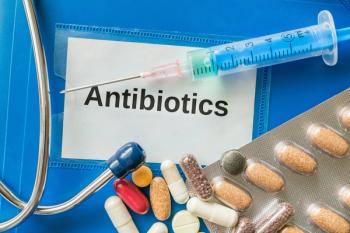
- Total Pharmacy® June 2025
- Volume 03
- Issue 03
Independent Pharmacists’ Unique Role During Disaster Management Efforts
Pharmacists have shown the ability to stand out among other providers amid some of the most debilitating natural disasters in recent history.
From 1980 to 2024, the National Centers for Environmental Information reported 403 confirmed natural disaster events impacting weather or climate, totaling economic losses over $1 billion.1 Natural disasters have reached unprecedented levels in the past 5 years, with 2020, 2023, and 2024 being the most destructive and costly since before 1980.
One of the most recent natural disasters was the late-2024 and early-2025 Los Angeles wildfires.2 With more than 2000 structures burned and 130,000 residents displaced, the effects are still being felt as officials prepare for future occurrences. “Overall, Northern California maintains normal fire potential through May, while Southern California (particularly the South Coast) faces a growing threat of large fires due to persistent drought and increasingly flammable fuels,” wrote CAL Fire in its seasonal outlook.3
Although wildfires are not the only natural disasters, and natural disasters are not the only types of unprecedented events (eg, the COVID-19 pandemic), health care providers are expected to become first-line responders in these circumstances. Even more so than other providers, independent pharmacists have the unique ability to reach their communities in times of trouble and may be the public’s most important resource in staying healthy during a natural disaster. “Pharmacists have historically played a significant role in disaster management, and there are a number of opportunities for pharmacists to bring their unique and innovative perspective, positioning, and skills to disaster response and management,” wrote the authors of a study published in Innovations in Pharmacy.4
READ MORE:
To further understand pharmacists’ abilities during natural disasters, Drug Topics® sat down with Brad Phillips, PharmD, BCACP, a clinical assistant professor at the University of Florida College of Pharmacy. During the 2024 hurricane season, Phillips joined us to discuss what patients and pharmacists should know if natural disasters lead to supply chain disruptions, power outages, and other unforeseen events.
“Planning ahead is key,” Phillips said. “Some things that I’ve recommended to patients are maintaining a current list of their medications, including prescription and over-the-counter medications, as well as the dose of said medication and the reason they are taking it. I also encourage patients to obtain early refills, if needed, especially during a state of emergency. This is something that the governor of the state can declare. During states of emergency, if there are any refills remaining for that prescription, they actually can be pulled early, providing the patient anywhere from a 30- to a 90-day supply.”
Although pharmacists may be more prepared than their patients when it comes to natural disasters, they have shown the ability to relay that preparation to patients with limited access to prescriptions. Not only is it important for pharmacies and their employees to have protocols for natural disasters, but pharmacies should also educate their patients on properly storing and managing their medications during a state of emergency.
Similar to Phillips’ idea of planning ahead, the FDA also has detailed provisions for patients to take during power outages, floods, or other events that compromise their ability to manage their medications.
“An emergency plan is especially important for those with health concerns, particularly if the power goes out. Taking precautions for storing medications and supplies is key to being prepared,” the FDA wrote.5 “Patients should: Keep an up-to-date list of their medications, including dose and indicated use; know how much medication they have on hand; obtain early refills if they anticipate access to their pharmacies will be disrupted; place medication bottles or packages in watertight containers (such as plastic containers with lids) if there is a possibility of flooding or other water damage; and have ice available for medications that need refrigeration.”
Natural disasters can be especially harmful to patients in polypharmacy prescription regimens, a term for patients taking 5 or more prescription medications concurrently. According to the authors of a study published in Global Health Research and Policy, the prevalence of polypharmacy in US adults increased by 8.9% from 1999 to 2018.6
However, when it comes to the potential disruptions caused by natural disasters, patients taking anywhere from 1 to more than 5 medications may not immediately be concerned about their prescription regimens. Regardless of the extent to which a disaster debilitates a community’s health, pharmacists should be proactively prepared to facilitate disruptions in the supply chain for the sake of their patients.
Aside from properly preparing medications during a disaster, Phillips mentioned the importance of establishing communication with patients. “There definitely can be a lot of communication barriers throughout disaster preparedness, but again, in this day and age, there are a lot more routes of communication that occur during those times. I think text-messaging services have drastically improved,” Phillips said. “Text messages and email are another thing. Social media, local TV, and radio also come out with announcements before, during, and after the storm.” Patients can utilize these resources to stay up-to-date on disaster information, and pharmacists can also use them to facilitate better patient communication.
Phillips also touched on pharmacist preparedness in terms of ensuring optimal medication inventory. He advises pharmacists to be knowledgeable regarding cooling packs and refrigeration to keep medications cold, insulated bags for drugs that need it, and backup power sources to keep medications stored properly. He also provided insights into the medications requiring the most attention during disasters, including refrigerated insulin, eye and ear drops, hormone therapies, and probiotics.
From the COVID-19 pandemic to the ongoing occurrence of community-impacting natural disasters, pharmacists have distinguished themselves from other providers. With expertise in medications and, more importantly, in facilitating patient relationships, pharmacists are among the best providers to address disruptions caused by natural disasters.
“It is evident from the literature that pharmacists are uniquely positioned during disasters to provide health care continuity and medication,” concluded the authors of the Innovations in Pharmacy study.4 “Planning has its inherent value and is a form of deterrence, and deterrence is always the best defense. Pharmacists participating in policy development contribute significantly to disaster response efforts.”
To read these stories and more,
References
1. Billion-dollar weather and climate disasters: United States summary. NOAA National Centers for Environmental Information. April 8, 2025. Accessed April 8, 2025. https://www.ncei.noaa.gov/access/billions/state-summary/US
2. Biscaldi L. Wildfire evacuation requires patient preparedness. Drug Topics. January 9, 2025. Accessed April 8, 2025. https://www.drugtopics.com/view/wildfire-evacuation-requires-patientpreparedness
3. Seasonal outlook. California Department of Forestry and Fire Protection. Accessed April 8, 2025. https://www.fire.ca.gov/incidents
4. Ahmer Raza M, Aziz S, Noreen M, Masood Raza S. Role of pharmacist in disaster management: a quantitative content analysis approach. Innov Pharm. 2021;12(4):10.24926/iip.v12i4.4359. doi:10.24926/iip.v12i4.4359
5. Safe drug use after a natural disaster. FDA. August 28, 2019. Accessed April 10, 2025. https://www.fda.gov/drugs/emergencypreparedness-drugs/safe-drug-use-after-natural-disaster
6. Wang X, Liu K, Shirai K, et al. Prevalence and trends of polypharmacy in U.S. adults, 1999-2018. Glob Health Res Policy. 2023;8(1):25. doi:10.1186/s41256-023-00311-4
Articles in this issue
6 months ago
How to Make the Pharmacy a Community Health HubNewsletter
Pharmacy practice is always changing. Stay ahead of the curve with the Drug Topics newsletter and get the latest drug information, industry trends, and patient care tips.





























































































































